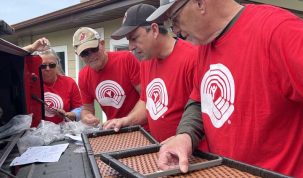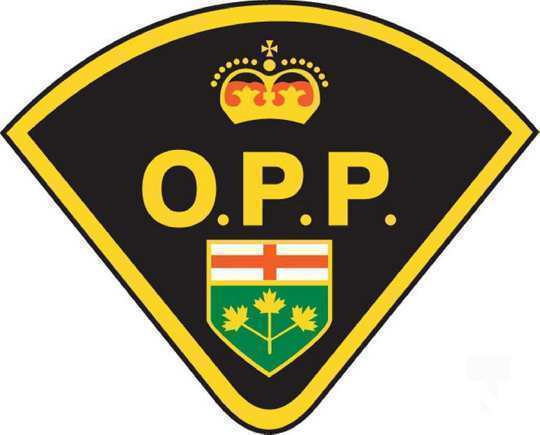By Cecilia Nasmith/Today’s Northumberland
COVID-19 vaccines hitting the Haliburton Kawartha Pine Ridge District Health Unit early next month is the big news from the first of what is planned as a series of weekly updates from the health unit.
Medical Officer of Health Dr. Ian M. Gemmill addressed a virtual media scrum Wednesday morning to share the news and add more details on information he believes needs to get out to members of the public.
Barring any disruptions in expected supply processes, Dr. Gemmill looks forward to a phase one vaccination of long-term-care residents and staff within a few weeks, followed by a larger phase two vaccination effort in late spring or early summer.
While he described the COVID situation as “quite fluid, not only from the point of view of the virus, but from the policy decisions that change from week to week,” Dr. Gemmill said that the fact that this is what he termed a winter virus meant that a more severe second wave was entirely predictable – not just locally, not just nationally, but globally.
As a winter virus, COVID loves dense populations. This means the health-unit region is in something of a privileged position with some 660 cases to date – about 40 of them in Haliburton and the rest pretty evenly split between Northumberland County and the City of Kawartha Lakes. About two-thirds of the long-term-care homes are in outbreak, but Dr. Gemmill is confident of how these situations are being managed.
The deaths in this region, he added, have all been among people who were chronically ill, for whom the virus proved a fatal event for an already-compromised individual.
The vastly improved testing has brought the knowledge that there are more cases among younger people than previously thought. The highest-risk group is among those aged 30 to 39 followed, in order of severity, by those aged 50 to 59, those aged 20 to 29 and those aged 60 to 69.
Dr. Gemmill estimates that probably two-thirds of HKPR residents are taking the right personal steps – hand hygiene, masking, social distancing – though that is not a high enough proportion.
And he thinks people must take more seriously the role of travelling and social gathering in spreading the virus. He expressed hope that the lockdown and subsequent stay-at-home orders might diminish this kind of behaviour and effect a greater control over the rampant community spread.
“Some people might say, ‘I don’t care if I get sick.’ But I think what is not recognized enough is that every person is only two or three degrees of separation from a possibly vulnerable person,” the doctor said.
The result is ICU beds filling up at our hospitals and 200 deaths in long-term-care homes (including two staffers).
“This is just unacceptable,” he declared.
“When we get the vaccine in our area, we will leave no stone unturned to get it into long-term care, and then to others as fast as we can.”
Dr. Gemmill termed the vaccines “the one huge bright light that we have.
“It’s going to be the magic bullet.”
The province is going to distribute its first doses to the long-term-care homes in the most heavily affected areas like the GTA, Windsor and Ottawa. As additional supplies arrive, long-term-care residents, workers and essential-care providers in other areas will be inoculated. Locally, given all current data, Dr. Gemmill predicts this may happen as soon as early February.
“We are dusting off our vaccine plans, working with partners in the health-care sector and municipal sector to be ready not only for phase one but also when we move into phase two.”
Phase two, he reiterated, will involve essential workers, older adults and eventually all other members of the community who want to be vaccinated. Again, based on all available current data, he expects this to take place later in the spring or early summer.
Dr. Gemmill gave a figure of 70% as that portion of the population that should be vaccinated before real progress is made against the virus.
“We hope by this time next year, or even earlier – we won’t be back to normal completely, because I don’t think COVID is going to go away, but maybe some degree of normalcy so we can enjoy life as we expect it to be. Seeing friends and family and so on.”
Questions followed from members of the press, including the continuing wish for statistics that give a better idea of where cases are occurring.
Dr. Gemmill reiterated the right to privacy for patients, which might be compromised in reporting a case in a very sparsely populated area, as well as the potential for stigma. But requests have been made to the Information and Privacy Commissioner of Ontario, so this may change.
“I believe in transparency,” Dr. Gemmill said. But at the end of the day, it makes no difference. Whether you know someone nearby is infected or not, he said, everyone at all times should behave as if those around him or her are infected, always exercising appropriate personal precautions.
In answer to another query, Dr. Gemmill was very complimentary about the contact tracing work done by the health unit.
When a case is detected, he said, their first step is to enlighten that person about the requirement to isolate for 10 days.
The next step is a thorough investigation of the individual’s activities during the time they determine he or she may have been potentially disseminating the disease – what that person did, where he or she went, whom he or she saw, under what circumstances and for how long. These people are what are called high-risk contacts.
High-risk contacts are all contacted and informed of the requirement that each one also isolate for 14 days.
“It doesn’t always work perfectly,” he allowed.
“Sometimes people don’t remember, sometimes their assessment of the situation is different than what actually happened,” he said. But he estimated the health unit’s efficiency at contact tracing at well over 90%.
Asked for his input on the current provincial containment measures, Dr. Gemmill admitted to disappointment that a curfew was not included.
“Most of the preventable transmission is happening in social settings and gathering together in each other’s homes. Curfews send a message that gatherings are not okay.”
Still, he optimistically thinks of the stay-at-home order as a variant of a curfew, offering some degree of limitation to how and where people do circulate.
“To me, the most important thing is sending the right message to the people: this is serious,” he stated.
“We can’t pretend it’s 2019. We are in the second wave of an illness that is clogging up the health system and killing some of the population who otherwise would be okay.”





















